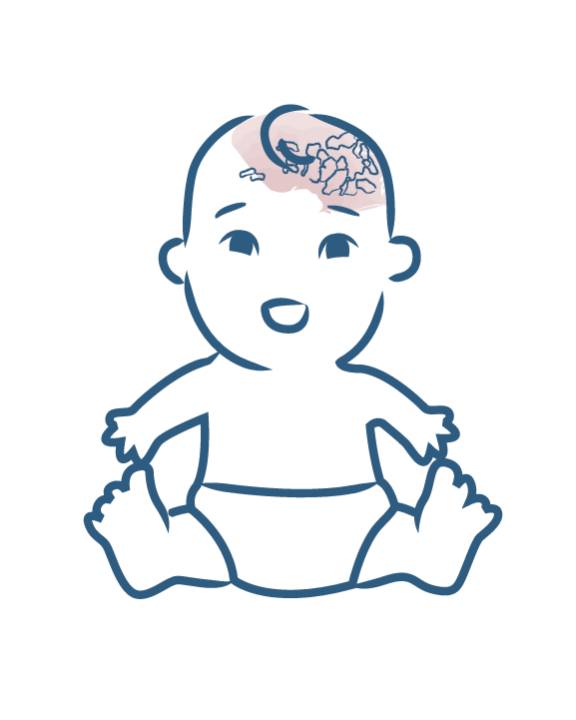
What is cradle cap?
Cradle cap is a very common condition in infants. Fortunately, it is not serious and disappears over time naturally or with the help of specific care products.
Cradle cap in infants
Even though it is a benign condition, parents are often concerned about cradle cap. They want to find out everything they can about it to try to alleviate their concerns.
What is commonly called “cradle cap” actually refers to the moderate form of infant seborrheic dermatitis. It is an accumulation of dead skin on the surface of the scalp. Cradle cap can be compared to adult dandruff.
It is a very common condition among very young children. Cradle cap can appear very early, from the first weeks of life, then last from a few days to a few months and disappear completely around the age of two or three years without leaving any trace.
The exact origin of the condition is still unknown to this day. On the other hand, it is clear that despite the name given to this disease (it is often called “cradle cap”), it has no connection with the child's diet. There is absolutely no need to change the child's milk.
Although the causes of cradle cap formation are still unknown, the mechanism of crust formation is well identified. The condition is due to an excessive secretion of sebum that traps dead cells present on the surface of the skin until they form thick, crusty white or yellowish plaques.
These plaques are very adherent to the skin. They extend over areas of the skin rich in sebaceous glands, such as the scalp.
When lesions are few in number, simple cleansing measures such as the use of a gentle soap-free shampoo and a silk bristle brush can be used to treat them.
However, when the baby's cradle cap lesions are numerous and thick, it is recommended to apply a fatty substance or a care product before the bath to promote the removal of scales.
After several days of treatment, cradle cap crusts gradually peel away from the skin. Sometimes a few hairs may fall out with them. Once the crusts have fallen off, they can sometimes give way to red plaques and then lighter marks on the skin. These areas will regain the color of healthy skin within a few weeks and hair will also grow back normally of its own accord.
Cradle cap, only in the hair?
In the vast majority of cases, cradle cap is only seen in the hair. Cradle cap affects the scalp and remains attached to the hair. It results in greasy, white or yellow plaques of crusts that stick to the skin of the scalp. These plaques may be surrounded by redness. They most often appear on the top of the skull, at the fontanel (the place on the skull where all the bones meet) before spreading to the entire scalp. Sometimes, cradle cap can extend to the eyebrows, or even the face.
It is often a source of worry and concern for parents, yet it does not itch or bother the child, it is simply unsightly.
In rare cases, cradle cap can spread over the whole body. We then refer to Leiner’s disease.
Cradle cap in adults
In adults, we refer to seborrheic dermatitis rather than cradle cap. Cradle cap is really specific to young children. Seborrheic dermatitis is a skin condition that mainly affects adults. Its symptoms are very similar to those of cradle cap, which is why we sometimes incorrectly refer to cradle cap in adults.
In adults, this disease affects the scalp and in two thirds of cases the face is also affected. Its treatment consists of applying an antifungal product to fight against the development of a yeast involved in the onset of the disease.
Our care routines
Cradle cap

